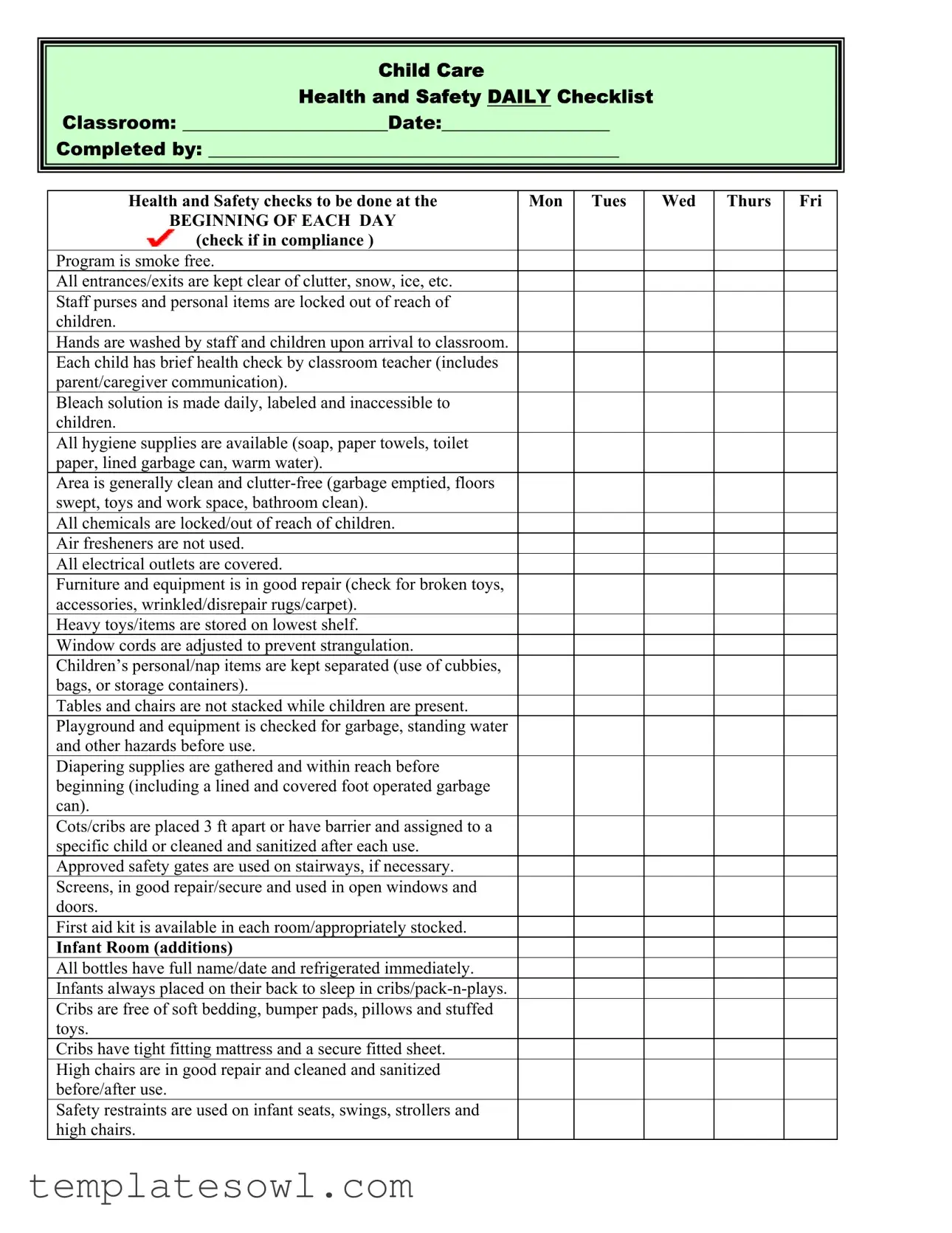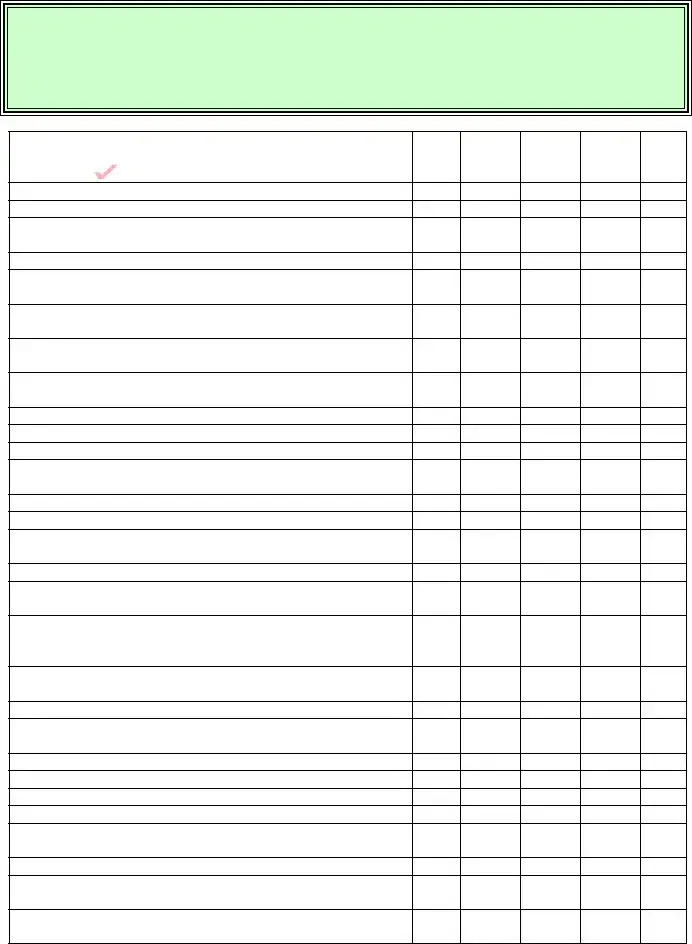Child Care
Health and Safety DAILY Checklist
Classroom: ______________________Date:__________________
Completed by: ____________________________________________
Health and Safety checks to be done at the |
Mon Tues |
Wed Thurs Fri |
BEGINNING OF EACH DAY |
|
|
(check if in compliance ) |
|
|
Program is smoke free.
All entrances/exits are kept clear of clutter, snow, ice, etc.
Staff purses and personal items are locked out of reach of children.
Hands are washed by staff and children upon arrival to classroom.
Each child has brief health check by classroom teacher (includes parent/caregiver communication).
Bleach solution is made daily, labeled and inaccessible to children.
All hygiene supplies are available (soap, paper towels, toilet paper, lined garbage can, warm water).
Area is generally clean and clutter-free (garbage emptied, floors swept, toys and work space, bathroom clean).
All chemicals are locked/out of reach of children.
Air fresheners are not used.
All electrical outlets are covered.
Furniture and equipment is in good repair (check for broken toys, accessories, wrinkled/disrepair rugs/carpet).
Heavy toys/items are stored on lowest shelf.
Window cords are adjusted to prevent strangulation.
Children’s personal/nap items are kept separated (use of cubbies, bags, or storage containers).
Tables and chairs are not stacked while children are present.
Playground and equipment is checked for garbage, standing water and other hazards before use.
Diapering supplies are gathered and within reach before beginning (including a lined and covered foot operated garbage can).
Cots/cribs are placed 3 ft apart or have barrier and assigned to a specific child or cleaned and sanitized after each use.
Approved safety gates are used on stairways, if necessary.
Screens, in good repair/secure and used in open windows and doors.
First aid kit is available in each room/appropriately stocked.
Infant Room (additions)
All bottles have full name/date and refrigerated immediately.
Infants always placed on their back to sleep in cribs/pack-n-plays.
Cribs are free of soft bedding, bumper pads, pillows and stuffed toys.
Cribs have tight fitting mattress and a secure fitted sheet.
High chairs are in good repair and cleaned and sanitized before/after use.
Safety restraints are used on infant seats, swings, strollers and high chairs.

